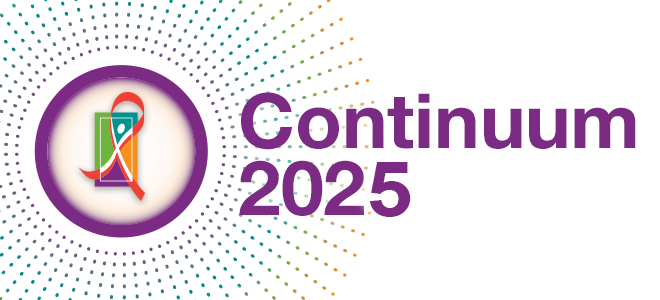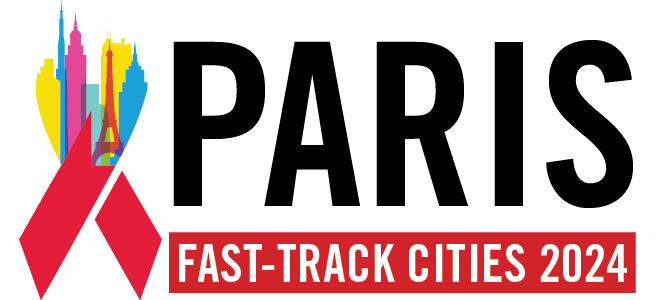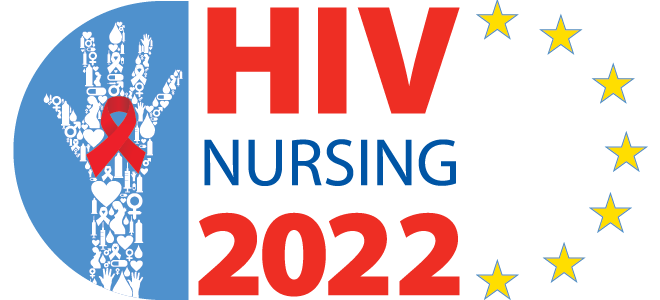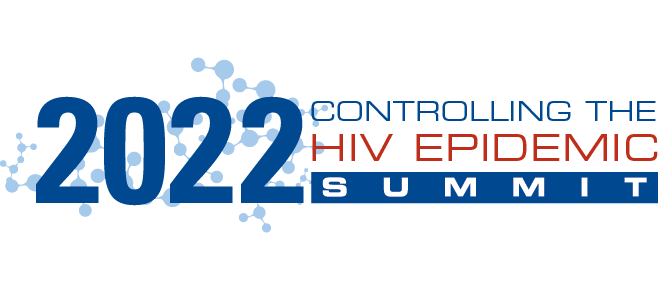NAVIGATING THE FUTURE OF THE HIV RESPONSE
WASHINGTON, DC (14 February 2025) – With Trump administration executive orders and funding uncertainties rattling the HIV response in the United States and globally, urgent action is required to maintain momentum towards ending AIDS as a public health threat. In this wide-ranging Q&A, Dr. José M. Zuniga, President/CEO of IAPAC and the Fast-Track Cities Institute, discusses strategies for advocacy, service continuity, and contingency planning while envisioning new governance structures to bring decision-making closer to affected communities and new metrics to demonstrate bidirectional return on investment (ROI) for prioritizing the HIV response. Emphasizing an all-hands-on-deck approach from funders and the need for greater integration of HIV programs within broader health systems, Dr. Zuniga shares his perspectives on a path forward to sustain and strengthen the HIV response in an era of unpredictability.
The HIV response in the United States and globally is being reshaped by Trump administration executive orders, stop-work orders, and other policy directives, creating uncertainty for programs that are essential to saving and enhancing lives. What is your message to organizations, policymakers, and communities on ensuring continuity of HIV services and public health resilience in the face of these challenges?
Dr. Zuniga: The HIV response has always been an exercise in resilience, adaptation, and advocacy. Despite shifting political landscapes, we must remain steadfast in ensuring that services are not disrupted, that communities remain engaged, and that policymakers are continuously reminded of the public health imperative to sustain HIV programs. Our approach should be multi-tiered, emphasizing legal advocacy where necessary, leveraging municipal and state-level commitments, and securing alternative funding streams to mitigate risks at the national level. We should also be documenting and amplifying success stories from local HIV responses to demonstrate the effectiveness of decentralized solutions and to make the case for sustained investment even in challenging policy environments.
Beyond immediate advocacy efforts, we must proactively develop contingency frameworks that account for short-, mid-, and long-term scenarios. This includes strengthening municipal and subnational commitments to the HIV response, fortifying public-private partnerships, and expanding the role of community-based organizations in delivering essential services. We cannot allow uncertainty to stall innovation or prevent us from addressing critical needs, such as access to pre-exposure prophylaxis (PrEP), harm reduction, and rapid linkage to care. A critical component of this strategy must be expanding digital health interventions that provide remote access to HIV prevention and treatment services, ensuring that care delivery remains consistent even amid potential service disruptions.
Our messaging should remain grounded in science and human rights, countering any efforts to politicize public health. The HIV response must continue to advance evidence-based strategies that are also data-driven to achieve equitable health outcomes. As we navigate these policy shifts, a collective and unified approach will be key to maintaining the momentum towards ending AIDS as a public health threat, hopefully not too much past 2030. Engaging non-traditional allies, such as businesses, technology firms, and social justice movements, will be essential in sustaining pressure on decision-makers while broadening the base of support for HIV-related policies. If we fail to proactively safeguard HIV programs now, we risk losing not only funding and services but also decades of hard-earned progress towards global HIV targets.
With the possibility of funding rescissions and programmatic disruptions, organizations must act swiftly to safeguard critical services. How should global and US-based HIV stakeholders prioritize their responses to these significant threats?
Dr. Zuniga: The immediate priority is to assess vulnerabilities across HIV prevention, treatment, and care services and to identify where gaps may emerge. This requires rapid coordination between service providers, funders, and government agencies to ensure that essential programs – such as access to antiretroviral therapy (ART), PrEP, and harm reduction – remain intact. Organizations should also work with local and state governments to secure stopgap funding where possible, while engaging in direct advocacy to push back against detrimental policy shifts. Establishing emergency funding reserves and expanding financial contingency planning can provide a critical buffer against immediate service disruptions.
Beyond securing funding, we should all be focused on prioritizing workforce stability and continuity of care. Disruptions in federal funding often translate into hiring freezes or layoffs, which can destabilize service delivery. Ensuring that healthcare and community-based workers remain engaged and supported – whether through state-level funding, philanthropic investment, or innovative financing models – should be a top priority. Exploring task-sharing models, such as empowering pharmacists and community health workers to provide HIV-related services, can help mitigate the impact of workforce shortages. Additionally, leveraging digital tools to enhance workforce efficiency can help maintain service continuity even in the face of resource constraints.
Strengthening digital health strategies can also help mitigate access barriers. Person-centered telehealth, mobile outreach, and decentralized service delivery can sustain continuity of HIV and other health services in the face of physical and financial disruptions. As organizations, we must also take stock of our resilience mechanisms and reinforce these mechanisms to allow us to weather current and future political and financial turbulence. Strengthening regional and global collaboration, such as through knowledge-sharing platforms and joint funding initiatives, can provide additional stability and ensure that best practices are rapidly adapted to emerging challenges.
The HIV response has long been intertwined with advocacy, and today’s political landscape demands a recalibrated strategy. What approaches will be most effective in countering policy rollbacks and securing support for HIV programs?
Dr. Zuniga: Our advocacy must be bold, data-driven, and rooted in community mobilization. We need to galvanize not only HIV-focused organizations but also broader coalitions, including civil rights groups, healthcare advocates, and economic justice movements, to push back against policies that threaten the HIV response. Additionally, leveraging municipal leadership – such as mayors, county executives, city councils, and boards of supervisors – can serve as a powerful counterbalance to national policy changes, ensuring that local HIV commitments remain steadfast and laser-focused on addressing the needs of people living with and affected by HIV.
A strong media and public engagement strategy is also critical. We must amplify the voices of people living with HIV and affected communities to emphasize the real-world, life-or-death consequences of funding cuts or policy restrictions. Personal stories, paired with compelling epidemiological data, can create a powerful narrative that resonates with both policymakers and the public, even if it takes time to win over entrenched minds and hearts. This is a moment that calls for out loud visibility to counter a cultural thrust towards further marginalizing and outright trying to erase whole communities of people in a clear violation of human rights.
The global HIV advocacy agenda must also extend beyond traditional approaches. Engaging with multilateral organizations, leveraging trade agreements, and forming new alliances with sectors outside of health – such as finance and technology – can provide additional pressure points to sustain support for HIV and related health programs. I would argue that much like the COVID-19 pandemic, there is an opportunity for us to harness digital health and health AI, thus the importance of outreach to the technology sector cannot be overstated, and this is a space we are actively exploring, including through the development of our Total Patient Care™ app.
HIV service providers and policy advocates are reporting disruptions in HIV programs and service delivery. How should organizations plan for short-, mid-, and long-term contingencies in this uncertain policy climate? And what contingency frameworks should be put in place to protect progress?
Dr. Zuniga: Short-term strategies should focus on triaging immediate risks, such as funding cuts or policy restrictions that may impact specific populations. Establishing emergency funding reserves, strengthening municipal commitments, and expanding community-led service delivery models can help ensure that immediate disruptions do not translate into service gaps. Rapid-response advocacy teams should be mobilized to challenge harmful policies through legal mechanisms and public awareness campaigns. Moreover, organizations should develop data-driven impact assessments that quantify the consequences of potential funding or policy shifts, enabling more effective lobbying efforts and resource reallocation.
Mid-term planning requires re-evaluating program sustainability and diversifying funding sources. This includes cultivating philanthropic partnerships, engaging private sector actors, and exploring alternative financing mechanisms such as social impact bonds. Organizations should also consider shifting towards more decentralized service delivery models, which can be more resilient in the face of national-level policy turbulence. Investing in capacity-building programs for local healthcare providers and community-based organizations will help create more autonomous, adaptable systems that can operate independently of shifting national priorities. Furthermore, strengthening cross-sector collaborations with education, housing, and social protection initiatives will help create a more holistic and durable response to HIV.
Long-term planning must envision new operational structures that ensure sustained impact regardless of federal policy shifts. This means advocating for the devolution of funding authority to local jurisdictions, strengthening the capacity of community-based organizations, and embedding HIV services within broader healthcare systems to insulate them from political fluctuations. Investing in policy safeguards can provide a long-term buffer against federal instability. And, leveraging emerging technologies, including AI and predictive analytics, can improve service efficiency and allow for adaptive, data-driven decision-making. A future-proof HIV response will depend on our ability to build systems that are flexible, innovative, and deeply rooted in resilience.
Traditional metrics for assessing return on HIV investments often focus on cost-effectiveness and health outcomes, but they fail to capture the broader economic, security, and diplomatic benefits. How should we rethink measurement frameworks to better reflect the mutual benefits of domestic HIV spending and foreign aid in advancing global health priorities?
Dr. Zuniga: New metrics are essential to move beyond a narrow focus on immediate health outcomes and demonstrate the full-spectrum impact of HIV investments. Domestic spending on HIV prevention, treatment, and care not only improves public health but also enhances workforce productivity, reduces long-term healthcare costs, and mitigates economic disparities that contribute to broader social instability. Similarly, foreign aid directed towards global HIV programs strengthens diplomatic ties, supports economic development, and reinforces international stability – outcomes that directly align with national security and trade interests. To effectively advocate for sustained or increased investment, we need metrics that quantify these bidirectional benefits in concrete economic, geopolitical, and social terms.
A recalibrated measurement framework should include indicators that capture cross-sectoral impacts, such as the effect of HIV investments on national workforce participation, reductions in dependency on emergency healthcare, and long-term cost savings from preventing new infections. For foreign aid, metrics should assess how global HIV investments contribute to political stability, economic growth, and pandemic preparedness in recipient countries – factors that ultimately reduce risks for donor nations as well. These indicators should be paired with qualitative assessments of diplomatic goodwill and regional cooperation, reinforcing the idea that investments in global health are not acts of charity but strategic imperatives that yield tangible returns for donor and recipient nations alike.
Moreover, we must adopt more dynamic and real-time data systems to measure the evolving impact of HIV spending, allowing for adaptive decision-making that aligns with both national and global priorities. This means integrating financial modeling with epidemiological and economic forecasting tools to project the downstream benefits of sustained investment. By framing HIV spending as a high-impact, dual-benefit strategy – one that strengthens national economic resilience while advancing foreign policy objectives – we can secure greater buy-in from policymakers, funders, and the private sector. The future of global health financing depends on our ability to articulate these bidirectional returns with precision and urgency.
As federal funding becomes more uncertain, the role of funders becomes more critical. How can they adopt an “all-hands-on-deck” approach to support the HIV response? And what role should funders – traditional and non-traditional – play in mitigating the risks posed by policy shifts?
Dr. Zuniga: All funders must recognize the urgency of the moment and respond with agility. Traditional donors, such as the Global Fund (to Fight AIDS, Malaria, and Tuberculosis), must explore mechanisms for rapid response funding that can fill gaps created by policy shifts. Meanwhile, private sector partners – including pharmaceutical and diagnostic companies, corporate foundations, and high-net-worth philanthropists – must step up to ensure that critical services remain uninterrupted. The business community has a vested interest in a healthy workforce and population, making HIV prevention and treatment investments aligned with long-term economic sustainability. A broader coalition of philanthropic and corporate actors can ensure that funding volatility does not translate into increased HIV infections or diminished access to care.
Beyond financial support, funders can contribute by creating an enabling environment for innovation and sustainability in HIV programming and service delivery. An enabling environment must include investing in digital health platforms, supporting community-led initiatives, and incentivizing differentiated service delivery models that enhance cost-effectiveness while maintaining high-quality care. Flexible funding mechanisms that allow for adaptation to emerging challenges will be key to ensuring program continuity. Funding must also be structured to allow flexibility in responding to emerging crises, ensuring that programs are not constrained by rigid, bureaucratic grant cycles. Innovative funding mechanisms, such as pooled global emergency HIV funds or challenge grants to leverage local government contributions, could further protect HIV responses from political unpredictability.
Non-traditional funders, including impact investors and technology companies, can also play a transformative role. We need new financial instruments, such as social impact bonds, as well as strategic investments in infrastructure that enhances HIV service delivery resilience. A more diversified and forward-thinking funding ecosystem will be critical in sustaining progress to avoid an overreliance on national funding that threatens HIV responses when political winds shift in troubling directions. Leveraging AI and data-driven funding models could also optimize resource allocation, ensuring that investments have the highest possible impact on HIV prevention and treatment outcomes. By reimagining how HIV programs are financed, we can build a system that is not only sustainable but also more responsive to emerging needs and opportunities.
The current policy environment highlights the vulnerability of siloed HIV programs. How can we shift toward an integrated approach that ensures sustainability and improves health outcomes for people living with and affected by HIV?
Dr. Zuniga: Integration must be at the heart of a more resilient and sustainable HIV response. The days of HIV being treated as an isolated health issue are long past – our work must be embedded within broader health systems, from primary care to mental health services to non-communicable disease management. This approach not only strengthens the overall healthcare system but also ensures that HIV services do not become easy targets for defunding, as they are essential components of comprehensive health and social care. Let’s also remind policymakers that the HIV infrastructure and workforce was critical during the COVID-19 pandemic, and this return on investment should never be forgotten.
To operationalize integration, we must break down barriers between disciplines and funding streams. Policymakers, donors, and implementers must incentivize collaborative models where HIV testing, treatment, and prevention are delivered alongside services for chronic disease management. This level of integration is particularly critical for populations that face multiple, overlapping health risks, such as key populations and individuals in lower-resource settings. Strengthening cross-sector partnerships with social services, housing, and employment programs will also help address social determinants that influence health outcomes. Embedding HIV services within broader healthcare ecosystems will create a more sustainable and resilient response that remains effective even in times of political or financial instability.
Ultimately, integration strengthens health equity by making services more accessible and less fragmented. If we want to future-proof the HIV response, we must embed it within universal health coverage efforts and ensure that every touchpoint with the healthcare system – whether a routine visit with a general practitioner or a mental health consultation – becomes an opportunity to reinforce HIV prevention, testing, and care. And in relation to HIV treatment, integration will allow for an accelerated and wider implementation of U=U as a driver for leveraging treatment as prevention to curb new HIV infections and end AIDS-related deaths, while also destigmatizing an HIV diagnosis.
Given uncertainties at the national level, cities and municipalities are once again emerging as key leaders in sustaining HIV programs, much as they modeled public health leadership during the COVID-19 pandemic. What role should municipal and community-led efforts play in ensuring the resilience of the HIV response?
Dr. Zuniga: City and municipal governments are on the front lines of public health, and their role in sustaining the HIV response has never been more crucial. Municipal leaders understand the immediate needs of their communities, are often more agile than national governments, and have demonstrated a growing willingness to step up when national policies fall short. This urban public health leadership has been evident in the Fast-Track Cities initiative, through which urban leadership has accelerated progress in HIV prevention, testing, treatment, and stigma reduction over the past decade since the launch of the now 550-plus global Fast-Track Cities network. Cities and municipalities can leverage local healthcare systems, allocate municipal budgets to sustain HIV programs, and build multi-sectoral partnerships that foster long-term resilience. The success of Fast-Track City-led approaches underscores how localized action to achieve global health goals can drive real impact even in challenging political environments.
Community-led action is equally critical, as civil society organizations are often the first to detect emerging challenges and respond with tailored, culturally competent interventions. Strengthening their role means ensuring sustainable funding, integrating them into formal health systems, and giving them a seat at the decision-making table. Community-based organizations also serve as trust bridges between healthcare providers and marginalized populations, ensuring that services remain accessible, particularly for key populations facing stigma or legal barriers. Moreover, investing in capacity-building for grassroots organizations ensures that they can expand their reach, influence policy decisions, and continue providing life-saving services despite shifting national priorities. True resilience in the HIV response requires putting more decision-making power in the hands of affected communities, ensuring that solutions are driven by lived experience and frontline expertise.
Moving forward, we must ensure that local strategies are not simply stopgap measures but are institutionalized as part of a longer-term vision. This requires securing city and municipal budget allocations for HIV programs, expanding public-private partnerships, and leveraging innovative financing models to ensure continuity. We must also create formal mechanisms that embed HIV program sustainability into urban health governance, preventing political turnover from derailing local progress. Local action is not just a response to national uncertainty – it is a model for how the HIV response should be structured globally, ensuring resilience through decentralization and grassroots leadership. Cities and municipalities must be empowered with greater autonomy in health policy making and funding decisions so that they are not wholly dependent on fluctuating national policies.
With increasing unpredictability in global health governance, traditional structures may not be well-suited for the future. What changes are needed to ensure that HIV programs remain adaptive and responsive to the realities of those most affected?
Dr. Zuniga: The current governance ecosystem for the HIV response – spanning UN agencies, global health organizations, national governments, NGOs, and funders – must become more agile and decentralized. Traditional, top-heavy models have often struggled to respond to emerging crises, whether it be shifts in political leadership, pandemics, or funding volatility. We need a shift from hierarchical global decision-making to participatory governance models that engage local leaders, civil society, and affected populations in shaping policies and resource allocation. Without a more distributed power structure, the response will remain reactive rather than proactive, limiting its ability to evolve alongside emerging public health threats. Greater transparency and accountability mechanisms must be embedded into governance frameworks to ensure that resources are equitably allocated, and that decision-making reflects the needs of those most affected.
Achieving this vision means rethinking how funding flows, how accountability is maintained, and how partnerships are structured. Regional and municipal governance mechanisms should have greater autonomy, with resources directed to where they are needed most without unnecessary bureaucratic hurdles. A shift toward more flexible, locally driven funding and implementation models will ensure that HIV programs are not held hostage by global politics. We must also invest in data systems that allow for real-time monitoring and course correction, ensuring that local programs can adapt dynamically to epidemiological shifts and funding constraints. Establishing a global HIV resilience fund, which could be activated in times of political or economic crisis, could provide further stability and allow for rapid intervention when traditional funding mechanisms are delayed.
Additionally, multilateral institutions must recalibrate their priorities to align with real-world needs. The post-2030 agenda for global health must reflect lessons learned from past governance challenges, ensuring that power is distributed equitably, and that the HIV response remains community centered. If we do not evolve, we risk stagnation at a time when agility is most needed. A successful recalibration of governance structures must be built on transparency, accountability, and a renewed commitment to human rights, particularly for the most marginalized populations. The next decade of global health will be defined by those who embrace adaptability, inclusion, and innovation as core principles of governance.
History has shown that changes in political leadership can have profound effects on public health programs. What insights can we draw from past transitions to ensure that HIV progress remains resilient, regardless of political shifts?
Dr. Zuniga: One key lesson is that progress is never guaranteed. The HIV response has faced setbacks due to policy reversals, funding reallocations, and ideological shifts, but resilience has always come from proactive advocacy and strategic contingency planning. Organizations must not only react to political change but anticipate it, developing safeguards that ensure continuity even in the most challenging environments. This means creating legal and financial mechanisms that make HIV funding less susceptible to partisan shifts, such as multi-year budget commitments and endowments that sustain critical programs. We must also strengthen partnerships with subnational governments, ensuring that city and municipal commitments can serve as a buffer against national policy fluctuations.
Another critical takeaway is that legal and policy frameworks matter. The most durable progress has come when HIV programs are embedded in laws, regulations, and binding agreements that cannot be easily overturned. Municipal ordinances, state-level commitments, and international accords can serve as bulwarks against regressive policies, ensuring that the gains made over decades are not undone by a single administration’s agenda. We must also reinforce the importance of HIV programs to the general public, making it politically costly for any government to dismantle them. If we do not create public accountability mechanisms that protect HIV services, we will continue to be vulnerable to policy swings that jeopardize lives and progress.
Although it is hard to take the long view when we are enduring so much trauma, we must remember that no administration lasts forever. While immediate advocacy is critical, long-term movement-building must remain a priority. Investing in the next generation of leaders – activists, scientists, and policymakers – ensures that the HIV response remains strong, adaptive, and driven by evidence, regardless of political fluctuations. By institutionalizing leadership pipelines and knowledge-sharing networks, we can ensure that the global HIV response is not only sustained but continues to evolve in response to emerging challenges of any kind, including political and financial.
The evolving global health landscape demands a reassessment of how we approach the HIV response. What immediate and structural changes should be prioritized to ensure the response remains effective and future-proof in the face of uncertainty?
Dr. Zuniga: First, we need an immediate mobilization of stakeholders to safeguard existing HIV programs and protect against regressive policy shifts. This mobilization includes legal advocacy, emergency funding mechanisms, and coordinated efforts to hold policymakers accountable. HIV should remain a priority in the broader health agenda, and we must counter any attempts to deprioritize it with data-driven advocacy. Additionally, we need to strengthen legal frameworks at municipal and state levels that can insulate HIV programs from national-level disruptions and ensure civil and human rights protections for key populations. I am happy to see the HIV community doubling down on strategic litigation where necessary to challenge discriminatory policies and defend the right to equitable healthcare.
Second, we must invest in long-term structural changes that make the HIV response more resilient. This means integrating services within broader health systems, securing multi-sectoral partnerships, and ensuring that funding models are diversified beyond reliance on single sources. The traditional global health funding model must evolve, embracing more flexible and decentralized mechanisms that empower local and regional decision-making. We also need rapid response mechanisms that allow programs to pivot quickly in response to political, economic, or public health crises.
Finally, we need to shift the HIV response from a reactive to a proactive stance. Political and funding landscapes will always fluctuate, but if we build an ecosystem that is community-led, financially sustainable, and integrated into broader health and social systems, we can ensure that progress is not easily reversed. The time to recalibrate is now – we cannot wait for the next crisis to force change. If we fail to take decisive action today, we risk undoing decades of progress and allowing political uncertainties to dictate the future of the HIV response.
About IAPAC: The International Association of Providers of AIDS Care (IAPAC) is a global association representing more than 30,000 clinicians and allied health professionals dedicated to improving the quality of prevention, care, and treatment services for people living with and affected by HIV and comorbid conditions. For more information about IAPAC, please visit: https://www.iapac.org
About FTCI: The Fast-Track Institute (FTCI) supports cities and municipalities worldwide in their efforts to achieve global health-related goals, including SDG 3.3 (ending the epidemics of HIV and TB), the World Health Organization goal of eliminating HBV and HCV, and the urban development-focused SDG 11 (making cities and human settlements inclusive, safe, resilient and sustainable). For more information about FTCI, please visit: https://www.ftcinstitute.org





